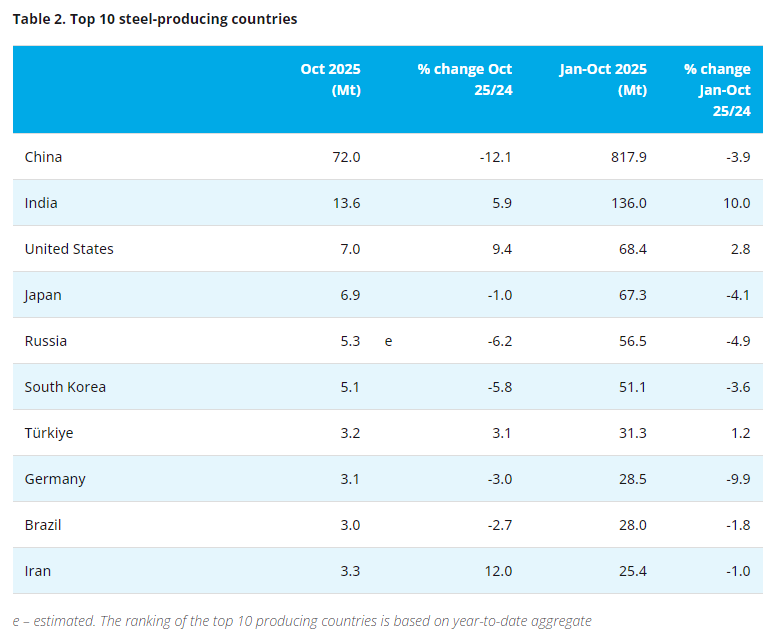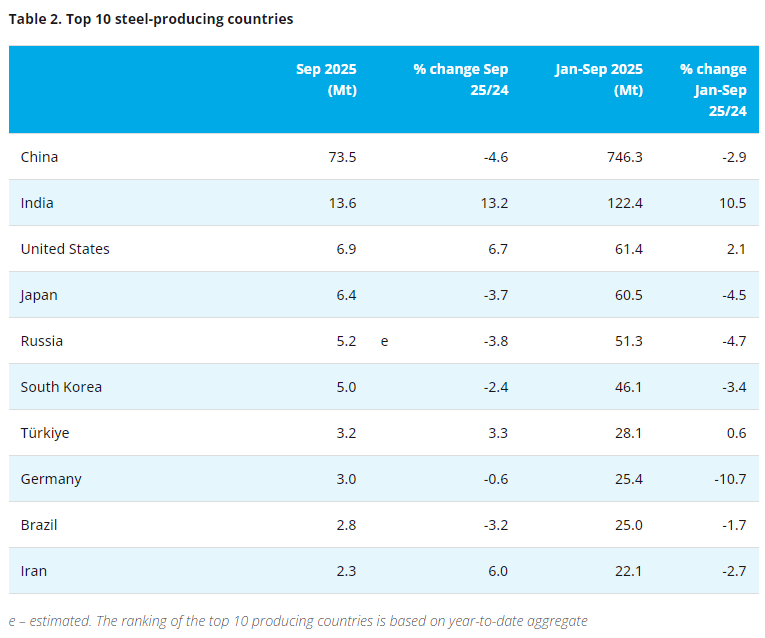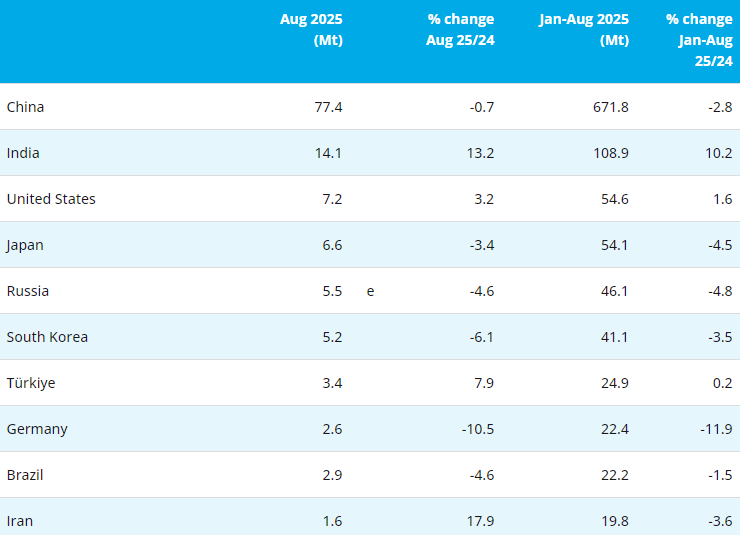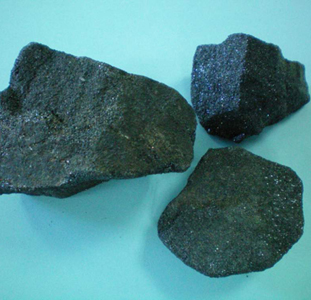[Ferro-Alloys.com] The Indian Steel Association (ISA) has revised downward India’s steel demand growth forecast for 2020 from 5.1% as per growth predictions made in February this year. The figures are expected to touch a low of negative 7.7%., with significant downside risks, an official statement said.
"We estimate finished steel demand in India to fall in calendar year 2020 to around 93.7 million tonne from an estimated actual of 101.5 million tonne in 2019, a decline of 7.7% or roughly by about 8 million tonne this calendar year," ISA said.
Interestingly, ISA had estimated in February that the steel demand in calendar year 2020 would grow by 5.1% to touch 106.7 million tons. "We now revised the steel demand forecast to 93.7 million tons. In other words, we estimate that the spread of the pandemic and subsequent lockdown will lead to steel demand declining by 13 million tonne or by 12.2% from a business as usual scenario," ISA said.
The steel demand forecast has three implicit assumptions - that the lockdown will not be extended beyond 40 days; that the government will come up with further fiscal stimulus, boosting demand and helping frontend stalled projects once the lockdown ends; and that the disruptions and challenges arising out of the lockdown will be overcome by early June. "If any of the three assumptions are not met, the downside risks of the forecast increases," ISA said.
Assuredly in such a scenario we will revisit the emerging figures and trends and have another steel demand assessment or forecast in May 2020. "We expect growth in all the steel using sectors to remain in negative territory during 2020, before registering a smart recovery aided by a low base, in calendar year 2021," according to the statement.
The Indian economy was in the midst of a slowdown in 2019 with steel demand remaining tepid throughout the year. However, ISA said green shoots in the economy were visible in the first two months of 2020, evaluated in accordance with the seventeen parameters it tracks.
"Just when a rebound, in both manufacturing and the services sector, was beginning to take root, the Covid19 pandemic surfaced in India and sparked off a medical crisis of significant proportions. By the third week of March, this began impacting economic activity. A nationwide mandatory and complete lockdown for 21 days was announced on March 25, 2020, which was subsequently increased to 40 days," the statement added.
Economic activities have come to a standstill but are expected to restart in a staggered manner after April 20, 2020. "It is expected that any kind of demand recovery will take at least another month as overcoming challenges in the form of getting migrant labourers back into manufacturing / construction zones, resetting disrupted supply chains and overcoming liquidity constraints particularly towards working capital needs, cannot be accomplished overnight," ISA said.
The lockdown, which undeniably was the need of the hour, was also one of the severest responses to Covid-19 worldwide and has singularly led to depressed demand across sectors, ISA said. Steel is an intermediate good. So, demand for steel is a derived demand and reflects - albeit with a lag - the prospects of the steel using sectors, it added. The modelling used to forecast steel demand thus uses a ‘bottoms up’ approach by taking into account the prospects of the steel using sectors, with appropriate weightage and adjustment for stocks or inventories in the system.
Construction, both infrastructure development and real estate development, accounts for the major chunk of steel use, but such activities were completely halted. A recovery is expected to remain weak due to the lesser availability of migratory construction workers. Most workers are also participants of the agrarian economy and are expected to participate in farm activities in the upcoming harvest season as also in the sowing season. Only after the monsoon ends and the workers return to the cities and construction sites can we expect any reasonable pick up in construction activities.
With regard to the Automotive Sector, supply chain disruptions, both abroad and within the country, have further accentuated the sufferings of the automotive sector which had already been hit hard due to falling demand, month on month, coupled with unsold BS IV inventories. Demand recovery is expected to be slow and gradual until the beginning of the festive season. Similarly, the machineries sector is expected to see continued decline due to weaker private investment, fragile export demand and halted projects in renewable energy, construction and mining.
The railways sector has been the one bright spot in the last few years, in terms of growth and steel use, mainly driven by its capital expenditures in modernization projects and record production of rolling stocks.
"However, the Indian Railways is likely to defer its capex expenditures this year as halted passenger services will dent and impact its revenue earnings significantly. This will affect growth in steel use, negatively," the statement pointed out.
- [Editor:tianyawei]



 Save
Save Print
Print Daily News
Daily News Research
Research Magazine
Magazine Company Database
Company Database Customized Database
Customized Database Conferences
Conferences Advertisement
Advertisement Trade
Trade

















Tell Us What You Think